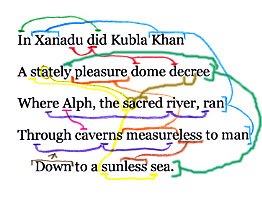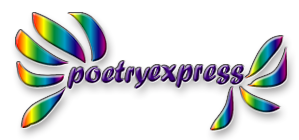Alliteration refers to the repetition of initial sounds of words, assonance to the repetition of vowel sounds within a word, consonance to the repetition of consonant sounds within a word, and rhyme to the repetition of both vowel and consonant sounds, especially, but not necessarily, at the end of a line.
Notice how these devices work together in the opening of Samuel Taylor Coleridge's "Kubla Khan":

Few poems use these harmonic devices so extensively, and you may not improve your poems by using these techniques more often. Overuse can be distracting. In fact, you've probably included some alliteration and assonance in your poetry without intending to.
Look over a poem you've written to see where you've used alliteration, assonance, consonance, and rhyme. You might want to mark the poem up, like the example above. Ask whether the techniques have been used effectively, whether sound and sense are working together or at cross purposes. Make any changes that you think might be effective, then share the poem with a partner or in a writing group, focusing your discussion of the poem's harmonic texture.
